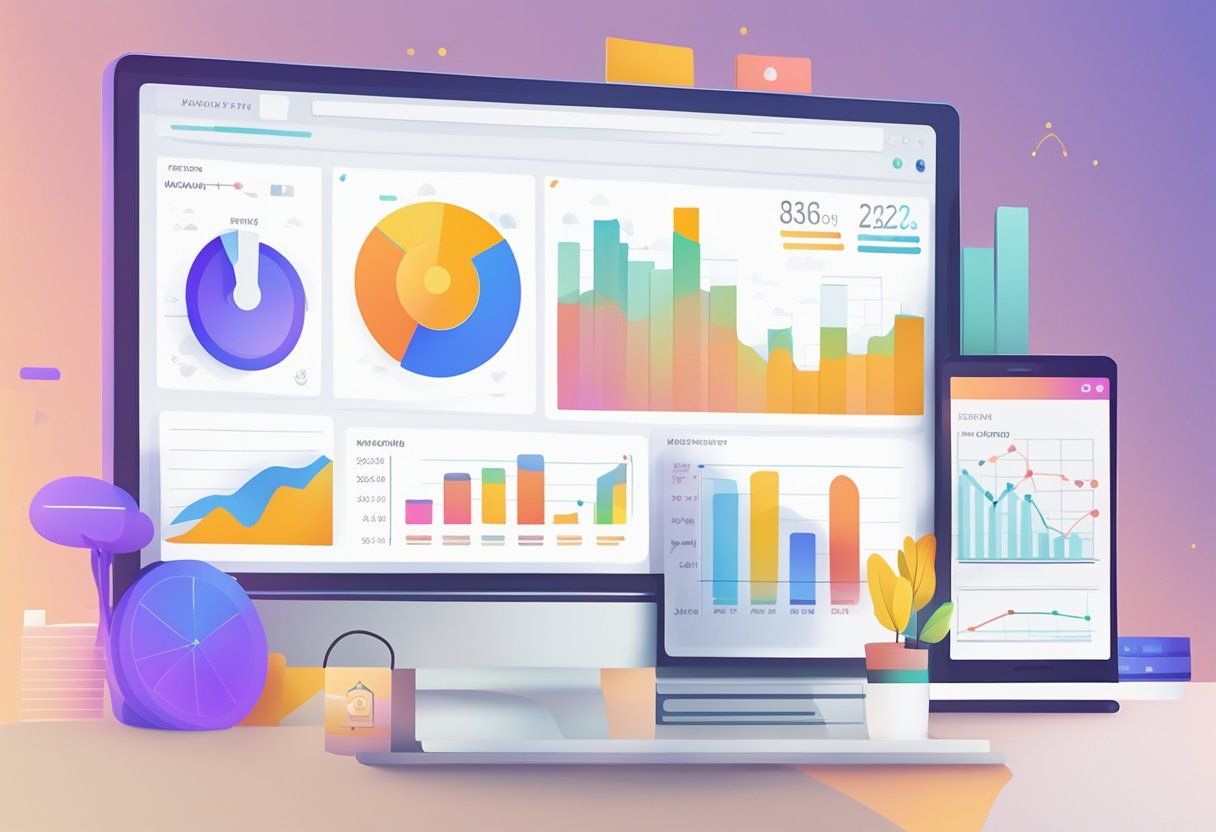B2B Marketing: A Guide to Optimizing Targeting and Improving Your Outbound Automation – Strategies for Success in 2024
B2B marketing is evolving rapidly, with companies seeking innovative ways to reach and engage their target audience.
As businesses navigate the complex landscape of B2B relationships, optimizing targeting and improving outbound automation have become crucial for success.
Effective B2B marketing strategies in 2024 focus on increasing revenue and sales while enhancing customer experiences through personalized approaches and advanced digital technologies.

The digital transformation has revolutionized B2B marketing, offering new avenues for reaching potential clients.
From user-friendly websites to targeted email campaigns, businesses now have a wide array of tools at their disposal.
Outbound marketing techniques, such as cold calling and direct mail, remain relevant but are being enhanced by sophisticated automation systems that improve efficiency and scalability.
As companies strive to stand out in a competitive market, the importance of data-driven decision-making cannot be overstated.
B2B marketers are leveraging analytics to refine their targeting strategies, segment their audience more effectively, and deliver tailored messages that resonate with potential clients.
This approach not only improves conversion rates but also builds credibility and trust in an increasingly discerning business environment.
Key Takeaways
- B2B marketing strategies prioritize revenue growth and enhanced customer experiences through personalized approaches
- Digital technologies and automation systems are transforming outbound marketing techniques for improved efficiency
- Data-driven decision-making enables refined targeting and more effective audience segmentation in B2B marketing
Understanding B2B Marketing

B2B marketing focuses on selling products or services to other businesses. It requires a unique approach that differs from marketing to individual consumers.
Comparing B2B and B2C Marketing
B2B marketing targets organizations, while B2C marketing aims at individual consumers.
B2B purchases often involve longer decision-making processes and multiple stakeholders. The sales cycles are typically longer, with higher-value transactions.
B2B marketing emphasizes building relationships and demonstrating expertise. It relies heavily on educational content and industry-specific knowledge.
In contrast, B2C marketing often appeals to emotions and immediate needs.
B2B buyers are more rational, seeking solutions to business problems. They require detailed product information and clear ROI.
B2C consumers, however, may make quicker, more emotionally-driven decisions based on personal preferences.
Key Principles of B2B Marketing
Effective B2B marketing strategies focus on building trust and credibility. They prioritize providing value through thought leadership and educational content. This approach helps establish the company as an industry expert.
B2B marketers must understand their target audience’s specific pain points and challenges. They tailor their messaging to address these issues directly.
Personalization is crucial, as B2B buyers expect solutions that fit their unique business needs.
Data-driven decision-making is essential in B2B marketing.
Marketers use analytics to track engagement, measure ROI, and refine their strategies. They also leverage account-based marketing to target high-value prospects with customized campaigns.
Developing a Targeted Marketing Strategy

A successful B2B marketing strategy hinges on precise targeting. By identifying the right audience, creating detailed buyer personas, and leveraging market research, companies can tailor their approaches for maximum impact.
Identifying Your Target Audience
B2B marketers must pinpoint the businesses most likely to benefit from their products or services.
This process involves analyzing industry sectors, company sizes, and geographic locations. Focus on organizations facing challenges that your offerings can solve.
Look at current customers to identify common characteristics. Examine factors like annual revenue, employee count, and technology usage. This data helps create a profile of ideal prospects.
Consider decision-making structures within target companies. Identify key roles involved in purchasing decisions, such as C-suite executives, department heads, and procurement managers.
Creating Buyer Personas
Buyer personas represent fictional yet realistic profiles of decision-makers within target companies. These detailed representations help marketers understand the motivations, goals, and pain points of potential customers.
Develop 3-5 distinct personas based on job roles, responsibilities, and challenges. Include demographic information, career goals, and preferred communication channels.
Example Buyer Persona:
- Name: Sarah, Marketing Director
- Age: 35-45
- Goals: Increase lead generation, improve ROI
- Challenges: Limited budget, proving marketing impact
- Preferred content: Case studies, ROI calculators
Use these personas to guide content creation, messaging, and outreach strategies.
Utilizing Market Research
Market research provides valuable insights into industry trends, competitor strategies, and customer needs. This data informs marketing decisions and helps refine targeting efforts.
Methods for B2B market research:
- Surveys of existing customers
- Interviews with industry experts
- Analysis of competitor marketing tactics
- Review of industry reports and publications
Use research findings to identify gaps in the market and opportunities for differentiation. This information can shape product development, pricing strategies, and marketing messages.
Regularly update research to stay current with evolving market conditions. Set up alerts for industry news and competitor activities to maintain a competitive edge.
Leveraging Digital Marketing

Digital marketing provides powerful tools for B2B companies to reach and engage their target audience. Effective strategies encompass search engine optimization, content creation, email campaigns, and social media advertising to drive leads and conversions.
Search Engine Optimization (SEO)
SEO is crucial for improving a B2B website’s visibility in search engine results.
Start by conducting thorough keyword research to identify industry-specific terms relevant to your products or services.
Optimize on-page elements like title tags, meta descriptions, and headers with these keywords.
Create high-quality, informative content that addresses your audience’s pain points and questions. This helps establish authority and improves search rankings.
Implement technical SEO best practices, such as improving site speed and ensuring mobile responsiveness.
Build quality backlinks through guest posting, partnerships, and industry collaborations.
Regularly monitor and analyze your SEO performance using tools like Google Analytics to identify areas for improvement.
Content Marketing Essentials
Content marketing is key to attracting and nurturing B2B leads. Develop a content strategy aligned with your buyers’ journey, addressing their needs at each stage.
Create diverse content types:
- Blog posts
- Whitepapers
- Case studies
- Infographics
- Videos
Focus on providing valuable, educational content that showcases your expertise. Use data and insights to support your claims and demonstrate industry knowledge.
Implement a content calendar to ensure consistent publishing.
Promote your content through various channels, including social media and email newsletters.
Regularly analyze content performance to refine your strategy and topics.
Effectiveness of Email Marketing
Email marketing remains a highly effective B2B digital marketing tactic.
Segment your email list based on factors like industry, company size, or buyer persona to deliver targeted messages.
Craft compelling subject lines to improve open rates.
Personalize email content using recipient data to increase engagement.
Include clear calls-to-action (CTAs) that guide recipients towards desired actions.
Automate email campaigns for lead nurturing:
- Welcome series
- Educational content drips
- Re-engagement campaigns
Test different email elements, such as send times, subject lines, and content formats.
Monitor key metrics like open rates, click-through rates, and conversions to optimize your email strategy.
Expanding Reach with Social Media Advertising
Social media advertising offers B2B marketers precise targeting options to reach decision-makers. LinkedIn is particularly effective for B2B campaigns due to its professional user base.
Develop ad creatives that resonate with your target audience. Use eye-catching visuals and concise, benefit-driven copy.
Experiment with different ad formats, such as sponsored content, display ads, or video ads.
Implement retargeting campaigns to re-engage website visitors or past customers. Utilize lookalike audiences to expand your reach to similar professionals.
Set clear campaign objectives and track relevant metrics.
Continuously test and refine your ad targeting, creatives, and bidding strategies to improve ROI.
Optimizing Outbound Marketing

Effective outbound marketing strategies are crucial for B2B success. Optimizing these approaches can significantly boost lead generation and conversion rates.
Perfecting Cold Email Campaigns
Cold email campaigns remain a powerful tool in B2B outreach.
Personalization is key to standing out in crowded inboxes. Use data-driven insights to tailor messages to specific prospects.
Craft compelling subject lines that pique interest without being misleading.
Keep emails concise and focused on value proposition. Include clear calls-to-action that guide recipients toward the next step.
A/B test different elements like subject lines, content, and send times to refine performance.
Implement automated follow-up sequences to nurture leads over time.
Monitor open rates, click-through rates, and conversions to continuously improve campaign effectiveness.
Cold Calling Techniques
Despite digital advancements, cold calling remains relevant in B2B outbound marketing.
Thorough research before each call increases success rates. Prepare a concise, engaging script that addresses prospect pain points.
Active listening is crucial. Ask open-ended questions to uncover needs and tailor the conversation accordingly.
Be prepared to handle objections professionally and confidently.
Timing matters. Analyze data to identify optimal calling windows for your target audience.
Use a mix of voicemails and follow-up emails to increase contact rates.
Track key metrics like connection rates, conversation duration, and appointment set rates.
Use this data to refine approach and improve results over time.
Driving Engagement through Events and Trade Shows
Trade shows and events offer valuable face-to-face interaction opportunities.
Research attendees in advance and prioritize high-potential prospects.
Develop a compelling booth design that clearly communicates your value proposition.
Train staff to engage visitors effectively. Prepare conversation starters and qualifying questions.
Use interactive demos or presentations to showcase products or services.
Implement lead capture systems to collect contact information efficiently.
Follow up promptly after the event with personalized outreach.
Measure ROI by tracking leads generated, meetings scheduled, and deals closed as a result of event participation.
Direct Mail Strategies
Direct mail can cut through digital noise in B2B marketing.
Focus on high-quality, personalized mailers rather than generic mass mailings.
Use creative formats like dimensional mailers or handwritten notes to grab attention.
Integrate direct mail with digital touchpoints for a multi-channel approach.
Include QR codes or personalized URLs to track engagement and provide additional information online.
Time mailings strategically, such as before important decision-making periods.
Follow up with phone calls or emails to maximize impact.
Enhancing Personalization and Segmentation
Effective B2B marketing relies on delivering tailored experiences to potential clients. By leveraging data-driven insights and advanced targeting techniques, businesses can create highly relevant campaigns that resonate with their audience.
Tailoring Messaging to Customer Segments
Segmentation allows B2B marketers to divide their target market into distinct groups based on shared characteristics. This approach enables more precise targeting and personalized communication.
Effective segmentation criteria may include:
- Company size
- Industry vertical
- Geographic location
- Buying stage
- Pain points
By understanding these segments, marketers can craft messages that address specific needs and challenges.
For example, a software company might emphasize cost savings for small businesses, while focusing on scalability for enterprise clients.
Personalized calls-to-action (CTAs) can significantly boost engagement. Tailor CTAs based on the prospect’s funnel stage:
- Awareness: “Learn More”
- Consideration: “Request a Demo”
- Decision: “Get a Quote”
Refining Your Value Proposition
A well-defined value proposition is crucial for B2B marketing success. It should clearly communicate the unique benefits of your product or service to each customer segment.
To refine your value proposition:
- Identify your Ideal Customer Profile (ICP)
- Research their specific pain points and goals
- Highlight how your solution addresses these challenges
- Quantify the benefits where possible (e.g., “Reduce operational costs by 30%”)
Use customer feedback and market research to continuously refine your messaging. A/B test different value propositions to identify which resonates best with each segment.
Account-Based Marketing (ABM) Approach
ABM takes personalization to the next level by treating individual high-value accounts as markets of one. This targeted approach involves:
- Identifying key decision-makers within target accounts
- Creating highly personalized content and campaigns
- Coordinating efforts across marketing, sales, and customer success teams
Implement ABM strategies using tools like:
- Personalized landing pages
- Custom content hubs
- Targeted advertising on professional networks
Measure ABM success through engagement metrics, pipeline velocity, and deal size. Regularly review and adjust your ABM tactics based on performance data to maximize ROI.
Automation for Efficiency and Scale
Automation streamlines B2B marketing processes, enabling companies to reach more prospects with personalized messaging at scale. It integrates key systems like email and CRM to execute campaigns efficiently while providing data-driven insights.
Automating Email Outreach
Email automation allows B2B marketers to send targeted messages to prospects based on predefined triggers and behaviors.
Personalized email sequences can be created to nurture leads through the sales funnel. AI-powered tools analyze recipient engagement to optimize send times and content.
Automated A/B testing helps refine subject lines, copy, and calls-to-action.
Drip campaigns deliver a series of timed emails to keep prospects engaged over longer sales cycles. Dynamic content insertion tailors messaging to each recipient’s industry, role, or pain points.
Integrating CRM with Outbound Efforts
CRM integration centralizes prospect data and aligns marketing and sales efforts.
It enables segmentation of contacts based on attributes like company size, industry, or engagement level. Automated workflows can assign leads to sales reps and trigger follow-up tasks.
Real-time syncing ensures marketing and sales teams have access to the latest prospect information.
CRM data can power personalized outreach at scale. Integration also allows tracking of interactions across channels for a unified view of the customer journey.
Measuring and Tracking Performance
Analytics dashboards provide real-time visibility into campaign performance. Key metrics like open rates, click-through rates, and conversions can be monitored.
AI-powered tools identify trends and provide actionable insights to optimize campaigns.
Attribution models track touchpoints throughout the buyer’s journey. A/B testing capabilities allow marketers to experiment with different approaches and measure impact.
Automated reporting saves time and ensures stakeholders have access to up-to-date performance data.
Integrating web analytics reveals how prospects interact with digital assets after email clicks. This data informs future campaign strategies and content creation.
Building Credibility and Trust
Establishing credibility and trust is crucial for successful B2B marketing. Companies can leverage various strategies to showcase their expertise and build strong relationships with potential clients.
Showcasing Testimonials and Case Studies
Testimonials and case studies provide tangible evidence of a company’s capabilities. B2B marketers should collect and highlight positive feedback from satisfied clients.
Short, impactful quotes can be featured on websites and marketing materials.
Case studies offer in-depth looks at successful projects. They should outline:
- Client challenges
- Implemented solutions
- Measurable results
Visual elements like charts or infographics can enhance case study presentations.
Marketers should aim for a diverse range of case studies across industries and company sizes to appeal to different prospects.
Educating with Webinars and Podcasts
Webinars and podcasts allow B2B companies to demonstrate their expertise and provide value to potential clients. These formats offer opportunities for in-depth discussions on industry trends and challenges.
Effective webinars:
- Cover relevant topics
- Feature knowledgeable speakers
- Include interactive Q&A sessions
Podcasts can explore industry issues through:
- Expert interviews
- Panel discussions
- Behind-the-scenes insights
Consistency in producing and promoting these educational resources helps build a loyal audience and establishes the company as a thought leader.
Nurturing Professional Relationships
Building strong professional relationships is key to earning trust in B2B marketing. Marketers should focus on personalized communication and genuine interactions.
Effective relationship-building tactics include:
- Attending industry events
- Participating in online forums
- Engaging on professional social media platforms
Regular follow-ups and check-ins help maintain connections.
Offering personalized advice or sharing relevant resources can demonstrate ongoing value to prospects and clients.
Creating opportunities for face-to-face meetings, when possible, can strengthen relationships. Virtual coffee chats or brief video calls can be effective alternatives for remote connections.
Analyzing and Improving Campaign Performance
Effective B2B marketing relies on continuous analysis and optimization. Tracking key metrics enables data-driven decisions to enhance targeting, boost engagement, and maximize return on investment.
Understanding Conversion Rates
Conversion rates measure the percentage of leads that complete desired actions. Track conversions at each stage of the sales funnel to identify bottlenecks.
Common B2B conversion points include:
- Website visits to lead captures
- Email opens to click-throughs
- Sales calls to meetings booked
- Proposals sent to deals closed
Analyze conversion data to pinpoint where prospects drop off.
Use A/B testing to experiment with different messaging, offers, and user experiences. Small improvements in conversion rates can significantly impact overall campaign performance.
Retargeting for Better Engagement
Retargeting re-engages prospects who have shown interest but haven’t converted. Implement retargeting across channels:
- Display ads to website visitors
- Email nurture sequences
- LinkedIn sponsored content
- Personalized landing pages
Segment retargeting audiences based on behavior, interests, and funnel stage.
Tailor messaging and offers to each segment. Monitor engagement metrics like click-through rates and time on site to refine retargeting strategies.
Measuring ROI and Adjusting Strategies
Calculate return on investment by comparing campaign costs to revenue generated. Track metrics like:
- Cost per lead
- Cost per opportunity
- Customer lifetime value
- Closed-won revenue
Attribute revenue to specific campaigns and channels.
Identify top-performing tactics and reallocate budget from underperforming initiatives. Set ROI benchmarks and regularly review performance. Be willing to pivot strategies based on data insights.
Implement lead scoring to focus on high-value prospects. Align marketing and sales teams around shared KPIs. Continuously test and optimize to improve ROI over time.
Forecasting and Future-Proofing
B2B marketers must stay ahead of emerging trends and technologies to maintain a competitive edge. Anticipating market shifts and embracing digital innovations are critical for long-term success.
Anticipating Market Trends
B2B marketers need to closely monitor industry developments and consumer behavior. Data analytics play a crucial role in identifying upcoming trends.
Regularly analyzing market reports, competitor strategies, and customer feedback helps predict future demands.
AI-powered predictive analytics tools can process vast amounts of data to forecast market changes.
These insights allow companies to adjust their strategies proactively. Attending industry conferences and networking events provides valuable insights into emerging trends.
Establishing a dedicated team for trend analysis ensures continuous monitoring of market dynamics.
This team can collaborate with sales and product development to align offerings with future market needs.
Adapting to New Digital Technologies
Embracing new technologies is essential for B2B marketing success. AI and machine learning are revolutionizing personalization and customer segmentation.
Marketers should explore AI-driven chatbots and virtual assistants to enhance customer interactions.
Augmented and virtual reality technologies offer innovative ways to showcase products and services.
Implementing these tools can provide immersive experiences for potential clients. Blockchain technology is gaining traction for secure transactions and smart contracts.
Investing in employee training ensures the team can effectively utilize new technologies.
Regular technology audits help identify areas for improvement and potential upgrades. Partnering with tech startups can provide early access to cutting-edge solutions.
Frequently Asked Questions
B2B marketing automation, innovative strategies, and effective tactics are crucial for success in 2024. Digital platforms and customer growth techniques play key roles in reaching professional services and expanding B2B customer bases.
How can B2B marketing automation enhance lead generation?
B2B marketing automation streamlines lead generation by personalizing outreach at scale. It enables targeted email campaigns, lead scoring, and nurturing sequences.
Automated workflows capture and qualify leads more efficiently, freeing up sales teams to focus on high-value prospects. Analytics tools provide insights to optimize campaigns and improve conversion rates.
What innovative B2B marketing strategies are leading the industry in 2024?
Account-based marketing (ABM) continues to gain traction, focusing resources on high-value target accounts. AI-powered predictive analytics help identify and prioritize the most promising leads.
Interactive content like virtual product demos and augmented reality experiences engage B2B buyers. Personalized video marketing creates memorable connections with decision-makers.
Which B2B marketing tactics are most effective for reaching professional services?
Thought leadership content establishes credibility in professional services. White papers, case studies, and industry reports showcase expertise and build trust.
Webinars and online events provide valuable networking opportunities. LinkedIn advertising and sponsored content target specific professional demographics.
What are the best advertising platforms for B2B businesses to consider?
LinkedIn remains a top choice for B2B advertising, offering precise targeting by job title, company size, and industry. Google Ads, particularly search and display networks, drive targeted traffic.
Industry-specific publications and trade show websites provide niche advertising opportunities. Programmatic advertising platforms enable precise audience targeting across multiple channels.
How can a B2B company grow its customer base through digital marketing?
SEO optimization improves visibility for industry-specific search terms. Content marketing attracts and educates potential customers throughout the buying journey.
Social media engagement builds brand awareness and fosters relationships. Referral programs incentivize existing customers to recommend products or services.
What are the key elements of a successful B2B marketing strategy?
Clear buyer personas guide targeted messaging and content creation.
A well-defined value proposition differentiates the company from competitors.
Multi-channel approach ensures consistent messaging across various touchpoints.
Data-driven decision-making optimizes campaign performance and ROI.
Building better solutions for better business®




